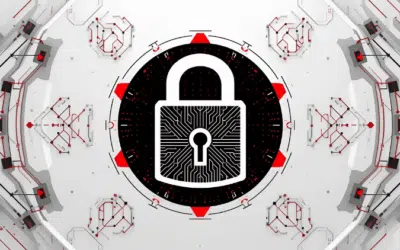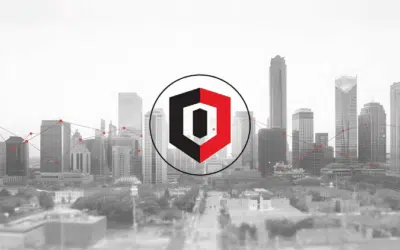As the old saying goes, “The more things change, the more they stay the same.” In 2025, the cyberattacks most likely to impact your business will look similar to the cyberattacks that have plagued small businesses for the last few years.
Phishing attempts. Social engineering. Insider threats. For years, businesses like yours have worked to thwart these kinds of intrusions and breaches. Sadly, they remain pervasive only now the attacks are getting more and more sophisticated.
In this post, we’ll outline specific cybersecurity risks that are likely to impact SMBs in the coming year. Some of the material will be a sobering reminder and refresh of lessons you’ve learned before. Other parts will shine a light on how these cyberthreats have evolved and what you can do to be prepared going forward.
Knowing what to look out for, along with practical actions to guard against these threats, will help you prepare and take proactive steps to protect your company.
Cybersecurity State of Play
Many SMBs lack the resources to establish robust security measures. Business growth and customer service often take precedence, leaving cybersecurity lower on the priority list. This ‘security gap’ provides an opportunity for attackers to target your business’ sensitive data.
Limited resources, coupled with the evolving nature of cyber risks, creates an obstacle for business owners. Technological advancements fuel the development of sophisticated methods for security breaches. As a small to mid-sized business, you’re not only wrestling with resource limitations but also an advancing adversary.
Understanding Ransomware Attacks
Hackers use “ransomware” to lock users out of their own systems, demanding a ransom to unlock it. Such an attack can disrupt your operations, compromise critical data, and strain your finances.
Over time, ransomware attacks have evolved into ‘double extortion’. Not only do hackers encode your information, but they also exploit it. Unlike days of old, they now demand two ransoms: one to decrypt your data and another to prevent them from leaking it online.
Fortunately, you have options to secure your operations in the event of a ransomware attack. Back up your data regularly. Educate your staff to identify suspicious emails. Implement endpoint protection to prevent infiltration at the source.
Understanding Phishing and Social Engineering Attacks
Phishing and social engineering attacks can trick employees into sharing data or information that should be kept private. Posing as trustworthy entities, hackers send deceptive emails or messages requesting login credentials, credit card details, or other essential data. What seems like a helpful act or adherence to a company directive can, in reality, endanger your business.
The sophistication of these threats keeps increasing, with criminals now using smarter, more targeted tactics. They’ve moved beyond generic spam to create believable messages for specific individuals in your organization. They use SMS or text messages and even leverage messaging platforms like WhatsApp to pose as a coworker and gain trust. Employees in finance and human resources, or anyone with access to sensitive data, are especially vulnerable.
So, how do you safeguard your company? Provide your team with the tools to recognize these threats. Regular training sessions that expose the latest phishing strategies and emphasize the need to scrutinize unusual requests can be beneficial. Simulated phishing tests can be an effective way to assess your staff’s preparedness and pinpoint areas that need improvement.
Understanding Insider Threats
An innocent mouse slip or an unchecked email can represent an insider threat. These attacks can be as simple as unintentional employee errors, or as severe as deliberate actions by disgruntled staff.
Small and mid-sized organizations face a unique challenge with insider threats. Their size often means a lack of rigorous access controls and advanced monitoring systems, making it easier for insiders to compromise data unintentionally or intentionally. An employee could mistakenly send confidential files to the wrong person, leave a password in plain sight while visiting a coffee shop, or an angry team member might purposefully leak information.
Though difficult to detect, one can minimize these dangers. Establish strong access controls to limit the data employees can view and ensure permissions are updated regularly. Monitor your systems diligently to detect unusual activity quickly. Creating a positive work environment where employees feel appreciated and listened to also lowers the likelihood of harmful insider actions.
Challenges in Securing Remote Work Environments
One change in recent years is the adoption of remote work and the acceptance that not all employees will be working in the office each day.
Switching to remote or hybrid work presents new cybersecurity issues. Employees are accessing company data from home networks and possibly personal devices, exposing a wide array of security vulnerabilities.
Home networks rarely have the same advanced security features of office networks. This makes these networks easy targets for attackers. Once inside a lesser-protected network, hackers can access a treasure trove of sensitive company data.
The rise of the “Bring Your Own Device” (BYOD) concept further complicates the situation. Personal devices usually lack proper security measures, giving hackers an accessible entry point. Monitoring these devices for threats is also a complex task.
Despite these challenges, there are ways to shield your information. Requiring the use of VPNs (Virtual Private Networks) can secure data transfers. Regular device audits can reveal and address system weaknesses. Creating a secure remote work environment is a collaborative effort, needing both the company and employees to take proactive steps.
Risks of Weak Passwords and Authentication
Weak or reused passwords present a significant threat to companies of all sizes. Poor password practices expose businesses to credential-stuffing attacks, a method where hackers use stolen credentials to access different accounts.
Implementing policies that promote complex passwords can fortify your security against this type of cybercrime. A password manager generates and stores complex, unique passwords for each account. Multi-factor authentication should be a requirement and provides an additional layer of significant protection. This tool requires users to provide at least two identification forms before granting access, creating a challenging environment for unauthorized users to break in.
The Risk of Neglecting Software Updates and Patch Management
Unpatched software is an open invitation to cybercriminals. Software updates and patches rectify known security vulnerabilities. Failing to install these updates in a timely manner provides an easy entry point for cyber threats, and businesses often overlook the significance of keeping up to date. Without a well-organized process for managing patches, it’s easy for updates to be overlooked.
In 2025, updates will become more crucial as zero-day exploits and other threat surfaces expand. Hackers are on the lookout for places to sneak into your network and patches from software publishers are the best, first way to thwart them at the application level.
Create a schedule for patching and take advantage of automated updates whenever you can. By applying some consistent effort, it is possible to protect your programs from online offenders.
Understanding Data Privacy and Compliance Risks
Sensitive client data is gathered and preserved by organizations regardless of their scale. If this information is abused or mishandled, it can tarnish your reputation and negatively impact your clients.
In 2025, both customers and regulatory bodies have heightened expectations for data privacy. There’s a growing consciousness among consumers regarding their privacy rights, prompting a heightened insistence on sturdy safeguards. In response, supervisory entities have heightened their regulations and any shortcomings in data confidentiality could lead to harsh punishments. With a new presidential administration likely to impart its own ideas around data privacy in the near-term, it has never been more important to make data governance and security a pillar of your cybersecurity posture.
Ensuring the privacy of your business requires frequent evaluation of the characteristics, storage methods, and application of the data in your possession. Maintain current knowledge of legal requirements to guarantee your handling of data adheres to the established regulations. Offer continuing education to your employees on proper use and storage procedures. Through these measures, you can confidently show your clients and governing organizations that you prioritize confidentiality and protect the information they provide you.
Closing Thoughts
In 2025, cybersecurity is not just an IT issue. It’s a business imperative. The threats may grow more sophisticated, but by adopting a vigilant, informed, and proactive stance, you can ensure your business remains resilient against potential attacks. Protecting your company is not just about safeguarding your operations and data—it’s about preserving the trust of your customers and securing the future of your business.
Contact Axxys Technologies for more help and support in safeguarding your company from cyber threats. Together, we can fortify your business and ensure the safety of your future, both in 2025 and into the future.








